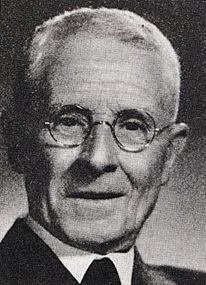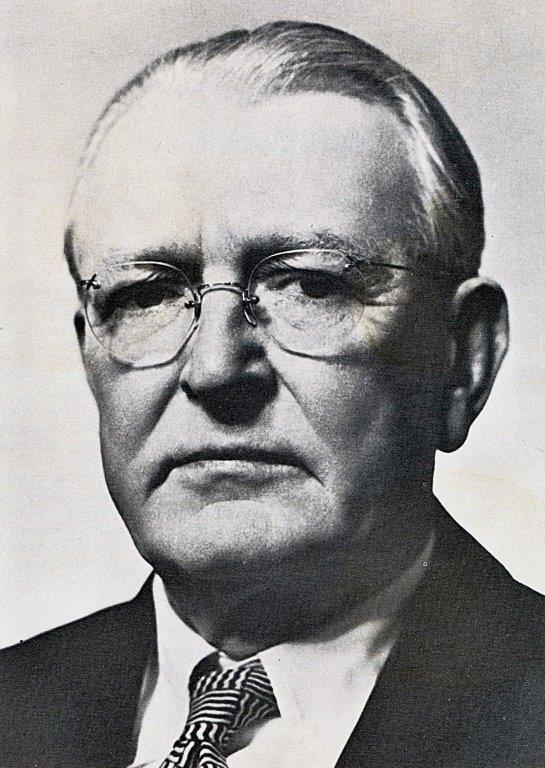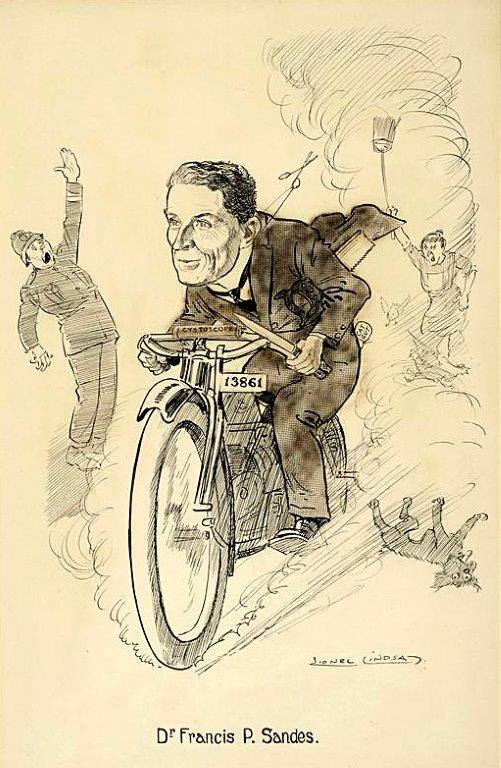2025 | Volume 26 | Issue 1
Author: Dr Peter F. Burke FRCS FRACS DHMSA FAMA
During the RACS Young Surgeons Forum on August 5, 1982, a paper entitled The Exordium was presented.
It is interesting now to peruse my presentation notes and report that not a word should be changed. The purpose of the paper was to explain something of the events associated with the formation of our College.
“… the surgical section of the New South Wales branch of the British Medical Association (BMA) met and formed a committee, to consider the formation of a College. Professor Francis Percival Sandes, first Professor of Surgery at the University of Sydney, wrote to Sir Hugh Devine in August 1926, outlining the proposals of the NSW committee.”

Prof Francis P Sandes
Professor Sandes suggested that the aims of the College be grouped under the heading: The Exordium. Of Latin origin, exordium literally means the beginning or introductory part, likened by Sandes, “To the beginning—the weaving of a web or cloth”.
It was further proposed that there be 40 founders who should sign the Exordium.
Professor Sandes wrote: “We should have this drawn on parchment and engrossed, it is the ‘Magna Carta’ and will be a precious and historical document”.
Two weeks later, a meeting was held in Sydney, with delegates from all states and New Zealand and 40 founder Fellows were nominated. The title Exordium was retained; the wording modified, and a constitution framed.
In The Mantle of Surgery, Wyn Beasley commented: “We have to regard Sandes’ letter as at once reasoned, meticulous and shrewd, and the concept of an exordium as ideally suited to the needs of the situation”.
What of Professor Sandes? Francis Percival Sandes was born at Ipswich, Queensland, on 21 January 1876 the son of Irish parents, his father a police constable. He was educated at Brisbane Grammar School and from an early age his intelligence was apparent. An exhibitioner, he qualified to study medicine at the University of Sydney gaining the degrees MB, ChM in 1899 and his MD in 1903 when he graduated with First Class Honours, and the University Medal in surgery. In 1913 he completed with Honours the examination admitting him to the degree of Bachelor of Science.
Professor Sandes became resident medical officer at Royal Prince Alfred Hospital (RPA) where he remained for two years. His association with this hospital was to continue until his death. After his senior year in residence at the hospital he became demonstrator in anatomy at the University of Sydney.
He began private practice in City Road, not far from the medical school. The practice grew substantially and eventually he relocated to Macquarie Street. In 1907 Sandes was appointed assistant honorary surgeon at RPA later becoming full surgeon, in due course joining the consulting staff. At the University of Sydney, he was lecturer in surgery from 1915 to 1920 and was appointed to the McCaughey Chair of Surgery 1921 – 1928; the first surgical chair in Australia, despite being a part-time position.
Dr Herbert Moran FRACS, in his book Viewless Winds, Chapter VII, Cancer…and Chaos, wrote that Professor Sandes was the first medical practitioner in Australia to use radium needles or radium tubes in the treatment of cancer.
“E H Molesworth, who in Australia was the most scientific of our early x-ray therapists, and I called a private meeting to consider what steps we should take to put cancer treatment on a more satisfactory basis.”
In 1928 a radium clinic for outpatient treatment, with new supplies of radium supplied by the federal government, was established and Professor Sandes was appointed by the Sydney University Senate as director of cancer treatment. He, in consultation with Dr Molesworth, examined proposals for the establishment of a department of radiotherapy, in association with the university’s cancer research laboratory.
However, the chaos predicted by Dr Moran soon emerged, particularly when the Senate of the University of Sydney approved the hire of radium, purchased from the Cancer Fund, for use by registered medical practitioners in the treatment of private patients suffering from cancer.
Dr Molesworth wrote to the Sydney Morning Herald on 22 September 1930, stating, inter alia: “I was astounded to read the committee’s report, which is absolutely incorrect, and most unnecessarily alarming to the public”.
On 18 August 1930, the press reported: “Solicitors acting on behalf of Doctor Francis Percival Sandes have issued a Supreme Court writ for £10,000 damages against Doctor Edmund Harold Molesworth, Macquarie Street, Sydney. The writ does not disclose the cause of the action.”

Sir Herbert Schlink
Sir Herbert Schlink, the doyen of RPA, in 1933 purchased a house named Marara at Pittwater for £6500, on 28 acres of bushland in its natural state. It possessed a fine wharf and boat shed, as initially the only access was by water from Newport. It was Schlink who persuaded Lionel Lindsay to draw his famous caricatures of RPA staff.

Caricature by Lionel Lindsay
In the biography, Schlink of Prince Alfred, one reads that the Marara visitor's book was a record of almost 40 years of consistent hospitality for not only every important medical visitor from overseas, but also many Australians, including Sandes, who in 1944 expressed his own appreciation in verse which he called, A Sunday at Marara. An excerpt:
He dines us well with bird and wine
And likes his game of cards
A good cigar and converse to
Of books and Bach and bards.
Professor Sandes’ entry in the Australian Dictionary of Biography (ADB) notes: “Opinions diverged widely about his contribution to the study and practice of surgery. His opponents held that he took the chair because, unlike the leading surgeons, he had the time for it and asserted that his effect on the university and the profession at large was minuscule; certainly, he published very little.”
With his many associations and appointments, Professor Sandes’ influence was considered a useful counterpoise to the Melbourne dominance of the embryonic College.
Study of Professor Sandes’ obituary notices provides much personal detail. Some excerpts:
“Closer scrutiny of the well-shaped head, keen eyes, firm, finely cut features, upright boyish figure, springy step and sober well-made clothes disclosed a distinction of its own."
“Similarly, few first acquaintances would have recognised that behind the youthful grin and humorous persiflage, there lay a keen intellect and wide scientific knowledge that embraced a complete familiarity with higher mathematics, a genius for chemistry and physics especially in relation to radiation radioactivity, and a wide literary equipment which included a fine classical scholarship.”
Similarly camouflaged was a fund of common sense. To a friend contemplating a business adventure he advised: “Never, when you are over fifty, buy anything that will keep you awake at night.”
His surgical outlook was eminently practical. He stated that he did not mind much who removed his appendix or even extracted his gallbladder, but he would take good care in choosing a surgeon to cut out his piles.
Sport was no mere sideline with ‘Sandy’ (as he was known by his close friends); motorcycling, sailing, fishing and tennis were his main interests. The ADB noted: “He kept a cycle in the hallway of his City Road home and used to start it there, producing a circle of oil which covered carpet, walls and ceiling”.
Finally: “No picture of Sandes is authentic which does not do full justice to his fine sense and exposition of humour. His animated expression, genius for narrative, clever mimicry, facile vernacular and an inexhaustible repertoire of reminiscence made him a raconteur almost unrivalled”. (The Medical Journal of Australia. July 21, 1945, p93 et seq.)
Sandes died of chronic nephritis on 16 May 1945, survived by his wife, two daughters and two sons. He was cremated with Presbyterian forms.